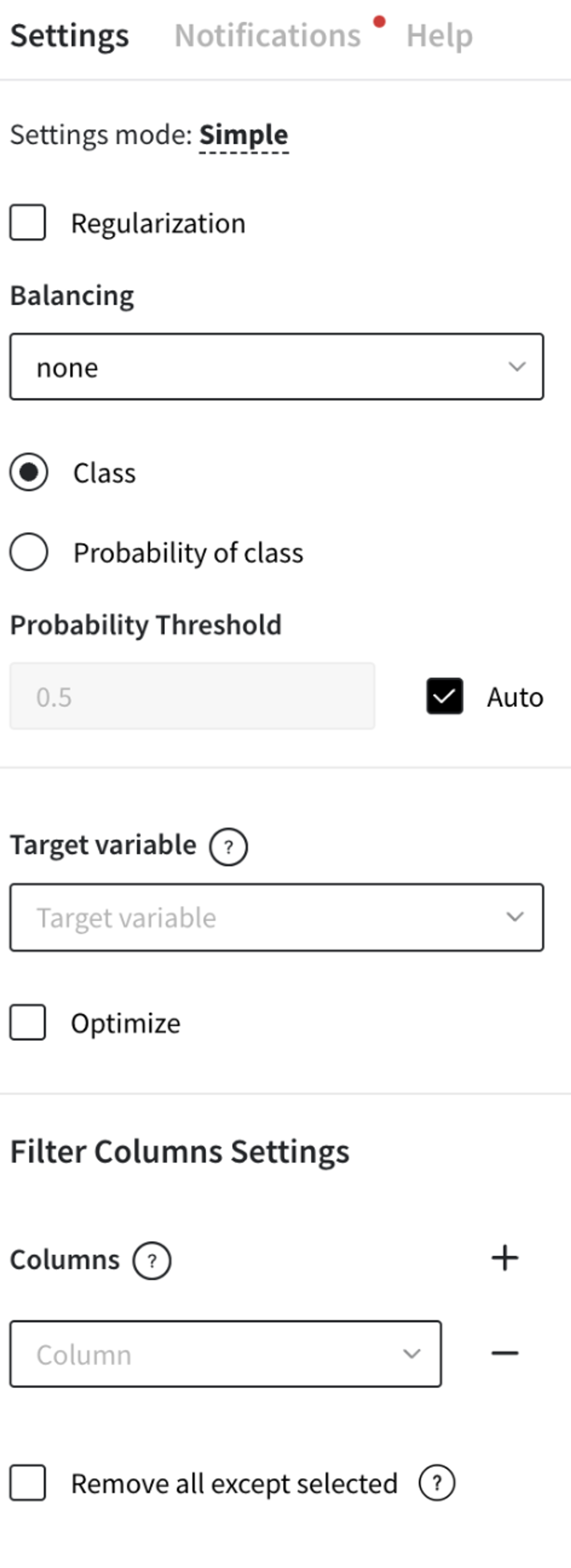Overview
Model optimization in Datrics is an advanced feature designed to enhance model performance by automating the validation and measure of fit process. This process is crucial in developing predictive models as it fine-tunes the model to better fit the underlying data, leading to more accurate predictions.

The Optimization Feature
Purpose of Optimization
Optimization refers to the process of adjusting a model's parameters to improve its predictive accuracy. This involves a systematic search for the most effective model settings, considering aspects like complexity (to avoid overfitting) and simplicity (to avoid underfitting).
Automated Validation and Measure of Fit
- Validation: Validation is the assessment of how well a model performs on a dataset it has not been trained on. In Datrics, this process is automated, allowing the platform to efficiently test the model against unseen data and determine its generalizability.
- Measure of Fit: The measure of fit indicates how closely the model's predictions match the actual data. Datrics automates this process by using metrics such as R-squared, Mean Squared Error, or any other appropriate statistical measures based on the model type.
Using the Optimize Feature in Datrics
How to Activate Optimization
- In the settings panel of your modeling environment, you will find an 'Optimize' checkbox. By selecting this, you enable Datrics's automated optimization process.
- Once activated, Datrics will iterate over different model configurations to identify the one that provides the best performance on the specified validation criteria.
What Happens During Optimization
- Parameter Tuning: The platform will adjust the hyperparameters of the model, such as learning rate or tree depth in decision trees, to find the optimal setting.
- Cross-Validation: Datrics employs techniques like cross-validation, where the data is split into multiple parts, with each part being used as a test set while the rest serve as training data.
- Performance Metrics: The optimization process evaluates different metrics that are appropriate for the problem at hand, like accuracy, precision, recall, or area under the ROC curve for classification tasks.
Outcome of Optimization
- Enhanced Model Performance: The main outcome of the optimization process is an improved model that offers higher accuracy and better predictive performance.
- Automated Process: By automating the optimization, Datrics significantly reduces the time and effort typically required for model tuning, allowing data scientists and analysts to focus on other critical aspects of their projects.